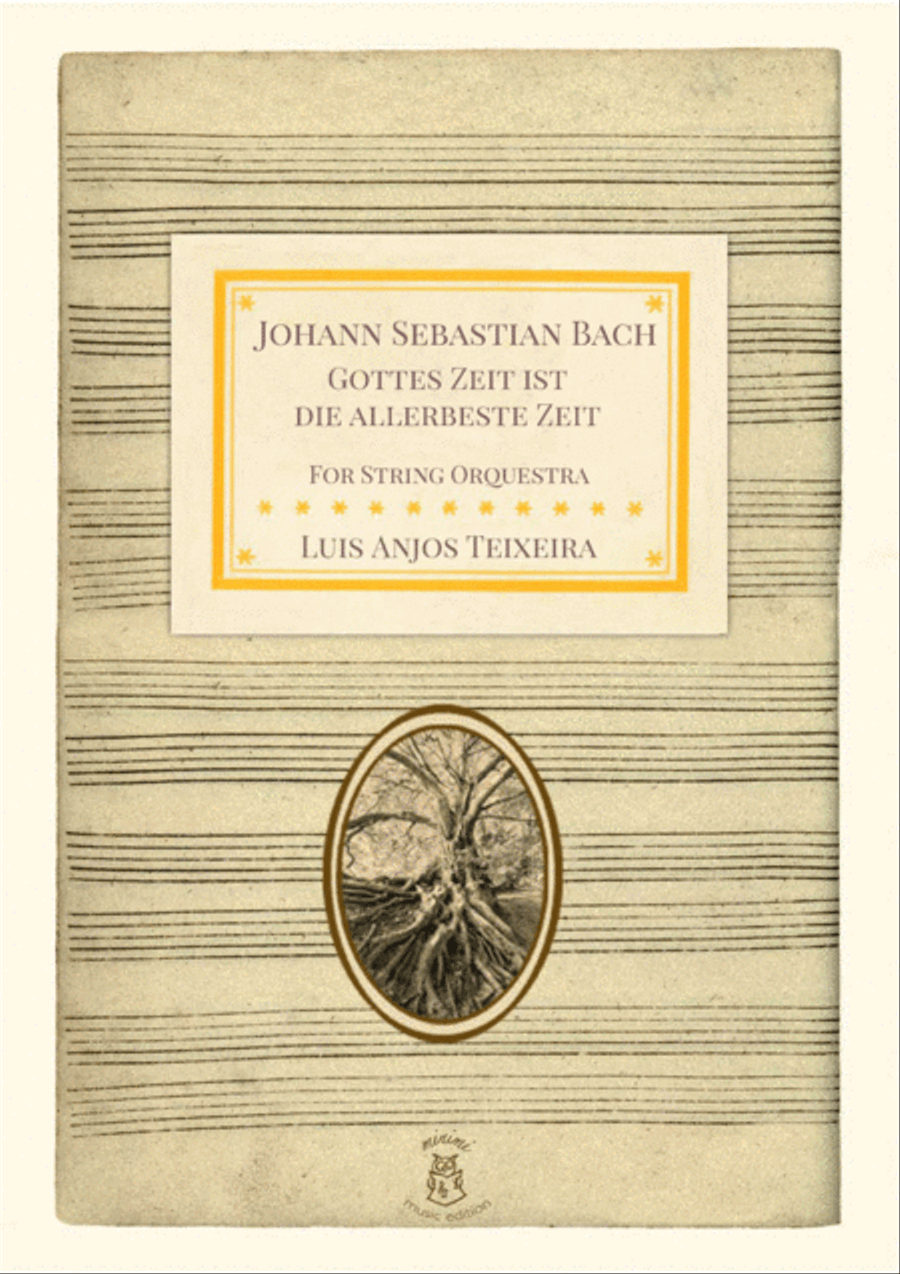Large Ensemble Cello,Double Bass,Viola,Violin - Level 3 - Digital Download SKU: A0.889436 Composed by Johann Sebastian Bach. Arranged by Luis Anjos Teixeira. Baroque,Concert,Contemporary,Easter,Standards. Score and parts. 11 pages. Luis Anjos Teixeira #4737807. Published by Luis Anjos Teixeira (A0.889436). The cantata „Gottes Zeit ist die allerbeste Zeit, BWV 106- „God`s Time Is The Very Best Time, ranks among Bach's most important works. It is a work of genius such as even great masters seldom achieve. The Actus tragicus belongs to the great musical literature of the world. Although Bach's manuscript is lost, the work is agreed to be one of the earliest Bach cantatas, probably composed during the year he spent in Mühlhausen 1707/1708 as organist of theDivi Blasil church, at the age of 22. Various funerals known to have taken place at this time have been proposed as the occasion for the composition, for example that of his uncle Tobias Lämmerhirt from his mother's family, who died inErfurt on 10 August 1707, and that of Adolph Strecker, a former mayor of Mühlhausen, whose funeral was 16 September 1708. The earliest surviving manuscript, in the hand of Christian Friedrich Penzel, was copied in 1768 after Bach's death. It introduced the title Actus tragicus. The cantata was published in 1876 as part of the first complete edition of Bach's works: the Bach-Gesellschaft-Ausgabe, edited by Wilhelm Rust. The text consists of different Bible passages from the Old and New Testament, as well as individual verses of hymns by Martin Lither and Adam Reusner, which all together refer to finiteness, preparation for death and dying. The Arrangement is relatively easy to perform, also appropriate for beginners. It is an ideal piece for advanced performers, this music touches deep into the Soul. The piece was arranged for modern instruments, I introduced some embellishments and interpretation symbols thus shortening the length of some notes, but no notes where otherwise changed or omitted in this arrangement. Also the original placement of the voices is totally respected, the structure of the piece was simply left as it was composed in its original form. Bach scored the instrumental parts for a small ensemble of Baroque instruments two recorders, two violas da gamba and continuo. I propose an interpretation for a modern string orquestra or a string quintet in this arrangement. You should feel Free to apply in this piece the Art and technic that expresses entirely your individual skills, Your taste and Soul. If the orquestra only has one double bass I would recommend you to reenforce the bass with a cello. It can be very well performed by a „string quintet- a string quartet with a double bass. Have fun! It is a piece that can be used in many different kinds of situations, in a serious concert hall, or a funeral, in Easter or even Christmas celebrations and all other kinds of Spiritual events. When performed Live It will give you back a great feedback from the public, you will always want to have it in your repertoire. The score was written on Finale. The sound file was produced with samplers from Garritan and conceived merely as an audio support for the presentation of this score. Thank you very much for taking your time to read this text and to listen to the file. I hope you have a lot of fun and enjoy the music. Sheers! Luis Anjos Teixeira Thanks to Claudia Eppelt for the all the Love, the wonderful painting and cover design. Special Thanks to Johann Sebastian Bach, Stray Dog Nina, Stray Queen Mimi, Carlinhos, Maria Pontinha, Maria Joaninha, Schwarzenegger, Maria Koboldinha. For all Living beings on Earth, for all our Ancestors, Thank You for all of You All Your Love and Compassion. Love Forever. Luis Anjos Teixeira
